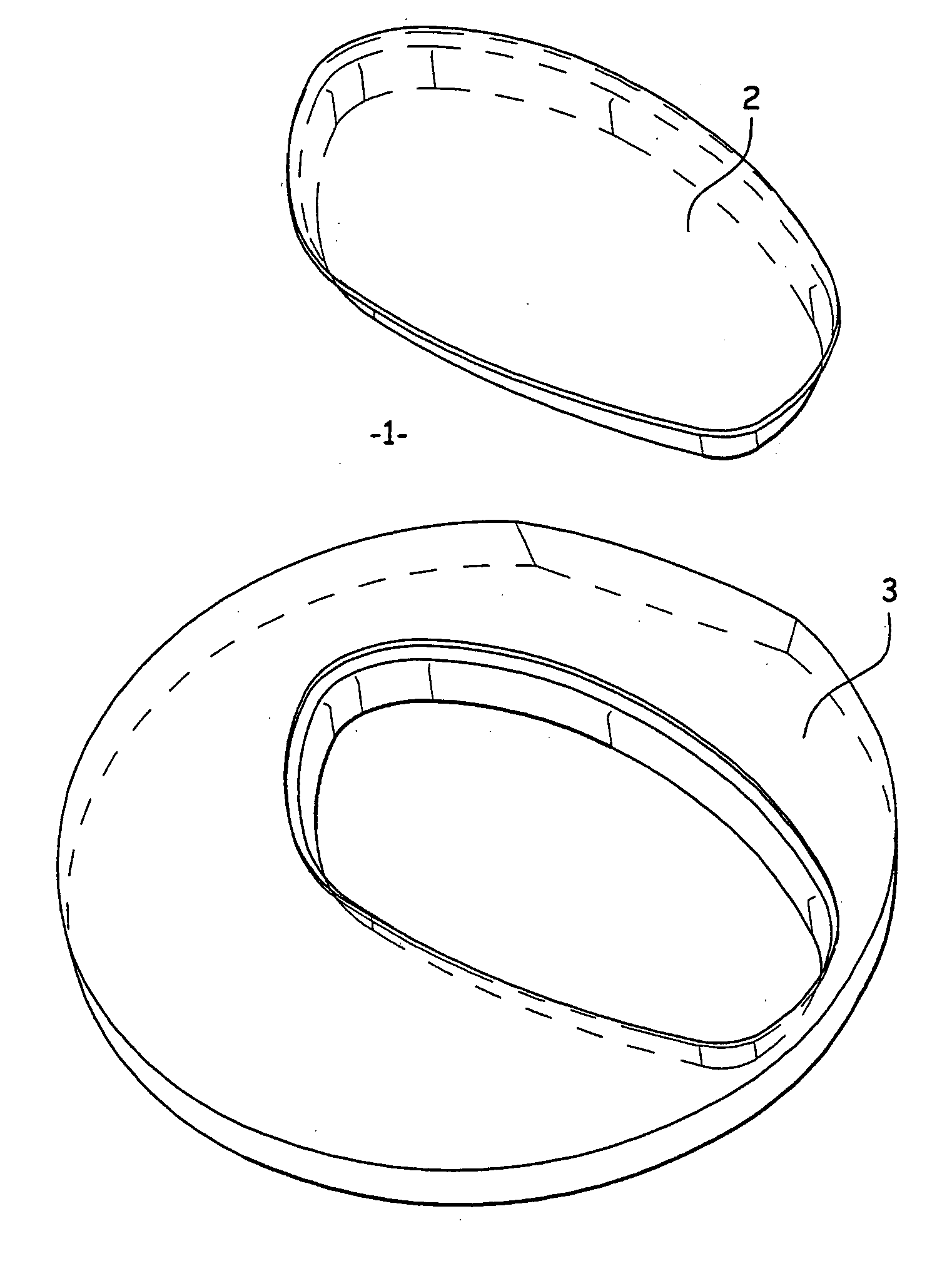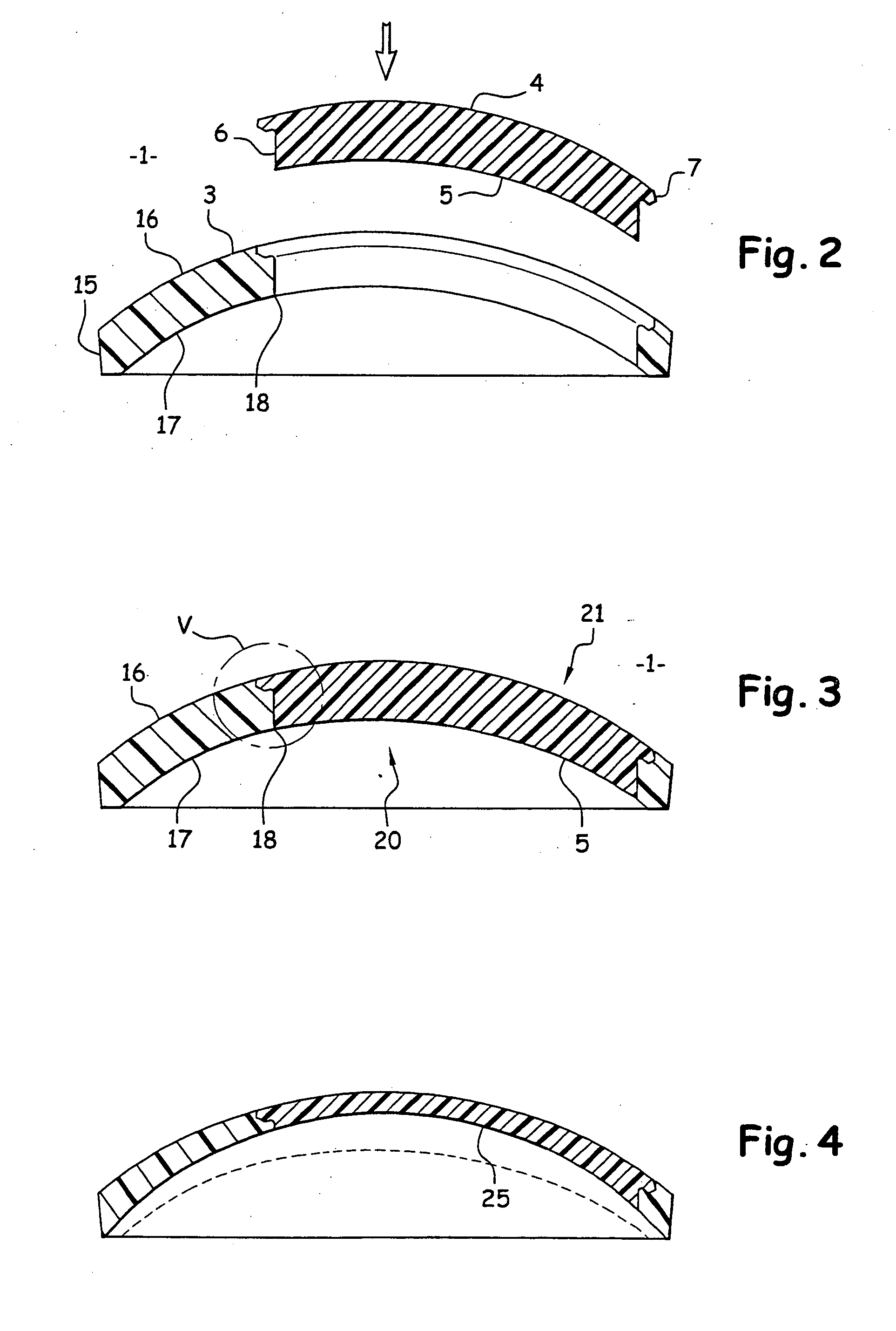Method of producing a corrective spectacle lens and lens blank used for same
- Summary
- Abstract
- Description
- Claims
- Application Information
AI Technical Summary
Benefits of technology
Problems solved by technology
Method used
Image
Examples
Embodiment Construction
[0036] As previously indicated, the invention permits the manufacture of corrective lenses, particularly lenses to be placed in strongly curved glasses. The lenses arranged in this type of glasses are of highly stressed sphericity, corresponding to the radius of curvature of the outer surface. In the field of glasses industry, the sphericity is usually defined by a base number. Thus, for example, one speaks of an 8-base lens for lenses which radius of curvature of the outer face is between 65 mm to 69 mm.
[0037] This type of lens may be made using the lens blank (1) shown in FIG. 1. Such a lens blank (1) is composed by assembling a glass blank (2) and a peripheral piece (3) into which the glass blank is fitted.
[0038] More precisely, the glass blank (2) is obtained by molding or machining operation, thus defining an outer spherical face (4) as well as an inner face (5), mostly also spherical, before being machined to the desired corrective vision.
[0039] This molding and / or machinin...
PUM
| Property | Measurement | Unit |
|---|---|---|
| Radius | aaaaa | aaaaa |
Abstract
Description
Claims
Application Information
 Login to View More
Login to View More - R&D
- Intellectual Property
- Life Sciences
- Materials
- Tech Scout
- Unparalleled Data Quality
- Higher Quality Content
- 60% Fewer Hallucinations
Browse by: Latest US Patents, China's latest patents, Technical Efficacy Thesaurus, Application Domain, Technology Topic, Popular Technical Reports.
© 2025 PatSnap. All rights reserved.Legal|Privacy policy|Modern Slavery Act Transparency Statement|Sitemap|About US| Contact US: help@patsnap.com



